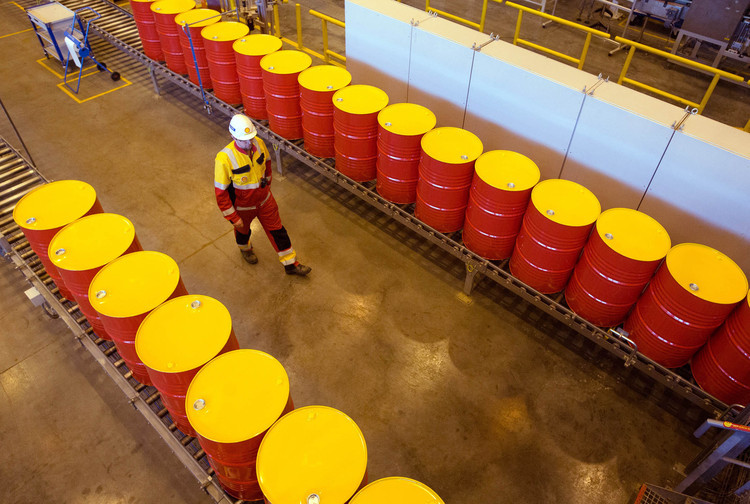
Oil advanced to a 15-month high in New York after the government reported that U.S. crude inventories unexpectedly fell last week and Saudi Arabia’s energy minister said many nations are willing to join OPEC output cuts.
Futures jumped as much as 3.3 percent to the highest since July 2015. The Energy Information Administration reported a 5.25 million-barrel decline in nationwide crude supplies to the lowest level since January in the week ended Oct. 14. Analysts surveyed by Bloomberg had forecast a 2.1 million-barrel increase. OPEC can continue to stabilize the market and other nations have given “strong signals” they will cooperate, Saudi Arabia’s Minister of Energy and Industry Khalid Al-Falih said in London.
“It’s a big draw. It’s a bit of surprise for the market because we are also in peak turnarounds and that’s what makes it so impressive,” Amrita Sen, chief oil economist for Energy Aspects Ltd. in London, said by telephone. Imports to the U.S. have dropped significantly, she said. “If then, on top of this, the OPEC cuts do materialize, our view is that we can see $60 by year-end. A lot depends on what happens between now and November 30.”
OPEC Meeting
Oil has fluctuated near $50 a barrel amid uncertainty about whether the Organization of Petroleum Exporting Countries will be able to implement an accord to reduce crude supply when they gather at an official meeting in November. An OPEC committee will meet later this month to try to resolve differences over how much individual members should pump. OPEC will start with an output freeze, or possibly a small cut, Al-Falih said.
“The perception in the oil market is that it’s much more risky to be short, better to be neutral or long. That has everything to do with OPEC,” Michael Wittner, the New York-based head of oil-market research at Societe Generale SA, said by telephone. Today’s inventory report may have been “magnified a bit, because it’s in line with a market that’s now predisposed to be bullish.”
West Texas Intermediate for November delivery, which expires Thursday, rose $1.40 to $51.69 a barrel at 1:22 p.m. on the New York Mercantile Exchange. Total volume traded was 20 percent above the 100-day average. The more-active December contract climbed $1.33 to $51.95 a barrel.
Brent for December settlement advanced $1.19 to $52.87 a barrel on the London-based ICE Futures Europe Exchange. The global benchmark crude traded at a 92-cent premium to December WTI.
The American Petroleum Institute foretold the stockpile decrease with their report Tuesday that nationwide inventories had dropped by 3.8 million-barrels. Crude supplies in Cushing, Oklahoma, the delivery point for WTI and the biggest U.S. oil-storage hub, fell 1.64 million barrels to 59.7 million barrels, the lowest supply level since December, the EIA said. U.S. average weekly crude imports slid to 6.91 million barrels a day, the lowest level since June 2015.
Gasoline stockpiles in the U.S. rose 2.47 million barrels to about 228 million barrels last week, despite refineries including Exxon Baytown in Texas and BP Whiting in Indiana having units offline for seasonal planned maintenance. The crack spread, a rough measure of the profit of turning a barrel of oil into gasoline, dropped as much as 11.3 percent to $11.49 a barrel on the Nymex.
Oil-market news:
Saudi Arabia told investors how much it’s willing to pay on its debut international bond to help finance a budget deficit that ballooned to the widest in more than two decades as oil prices collapsed, according to people familiar with the matter. There is no possibility Russia will pull out of an agreement to cut production, OPEC Secretary-General Mohammed Barkindo told reporters at a conference in London. Barkindo will meet Russian Energy Minister Alexander Novak on Monday.
Recommended for you
